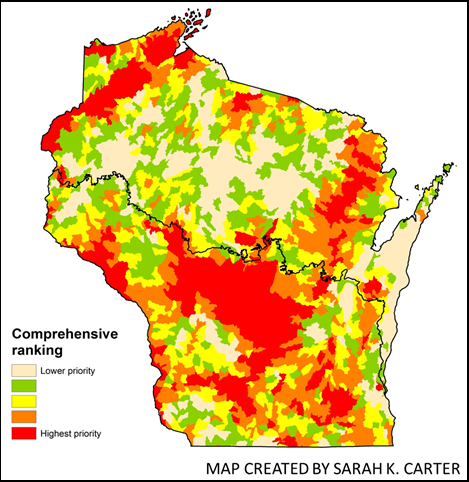Wisconsin Fire Needs Assessment Published
 Wednesday, June 29, 2016 at 1:30PM
Wednesday, June 29, 2016 at 1:30PM The assessment found that the highest priorities for management with prescribed fire occurred in the Central Sand Plains and Sand Hills, Northwest and Northeast Sands, and along the lower Wisconsin River. These areas reflect where high concentrations of rare ecosystems with frequent fire return intervals occur and there may be less challenges associated with applying prescribed fire in the Wildland Urban Interface.
To learn more:
1) View or download a two page PDF of the final report.
2) Email corresponding author Tracy Hmielowski.
3) Access the article in Ecological Applications via: http://dx.doi.org/10.1890/15-0509
Literature cited: Hmielowski, T. L., Carter, S. K., Spaul, H., Helmers, D., Radeloff, V. C., & Zedler, P. (2016). Prioritizing land management efforts at a landscape scale: a case study using prescribed fire in Wisconsin. Ecological Applications, 26(4), 1018-1029.
 Fire Needs Assessment,
Fire Needs Assessment,  fire ecology
fire ecology 

